












| Great Crested Grebe (Podiceps cristatus (Linnaeus, 1758)) |













|
|
Scientific name: Podiceps cristatus (Linnaeus, 1758) Common name: Great Crested Grebe French name: Grèbe huppé Order: Podicipediformes Family: Podicipedidae Size: 46 to 51 cm, 750 to 1200 g Habitat: Lakes and ponds. Food: Small fishes, molluscs, water insects and algae. Nesting: The nest is a reed platform floating and attached to the vegetation or laying on the underwater ground. Females lay 3 to 5 eggs between April and July. Migration: The Great Crested Grebe only lives on water. Birds living in colder areas move in winter to get away from ice. Geographic area: All Europe except Northern Scandinavia. Asia. |
The Great Crested Grebe is the largest grebe. It is easily identified with its blackish head and neck decorations. It is very noisy and produce some kind of cawing. It is not very shy, diving away to escape. Nuptial displays are very spectacular and young birds are carried on the adult's back. |
| [To know more about the Great Crested Grebe] [Next picture] [Top] |

|
I have been able to shoot many pictures without hiding branches because of this nest built in an open area. |
| [To know more about the Great Crested Grebe] [Next picture] [Previous picture] [Top] |
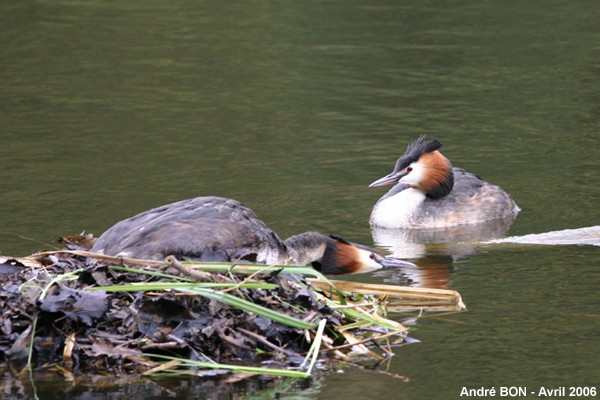
|
You just need to wait about half an hour near a nest (no too close, not to disturb the birds) and you will see the changing. The male and the female are taking turns to sit on the eggs. |
| [To know more about the Great Crested Grebe] [Next picture] [Previous picture] [Top] |

|
We will soon take pictures of young Grebes. |
| [To know more about the Great Crested Grebe] [Next picture] [Previous picture] [Top] |
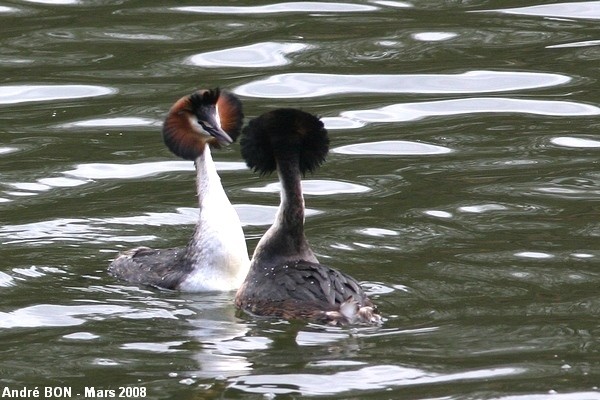
|
Nuptial displays are very spectacular with their erected crest feathers. |
| [To know more about the Great Crested Grebe] [Next picture] [Previous picture] [Top] |
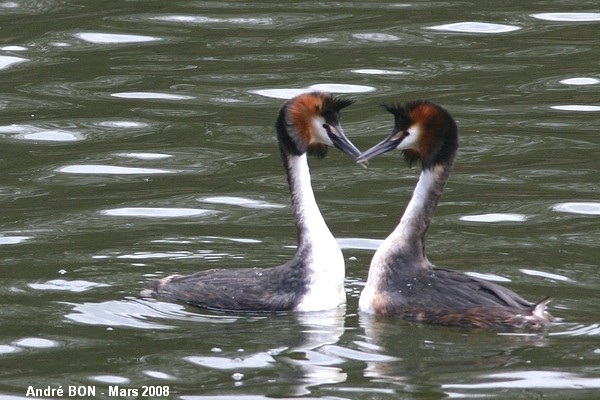
|
During nuptial displays, Great Crested Grebes are in front of each other and shake the head like as they would kiss the other one on the cheeks. |
| [To know more about the Great Crested Grebe] [Next picture] [Previous picture] [Top] |
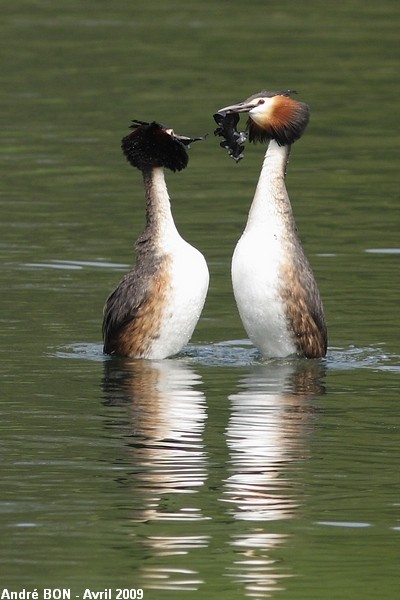
|
Another spectacular nuptial display is called "the penguin dance". Both Grebes dive simultaneously under water and come back with plants in their bills. Then they raise their body out of water, facing each other. |
| [To know more about the Great Crested Grebe] [Next picture] [Previous picture] [Top] |

|
Young Grebes are carried on the adult's back as soon as they hatch out of the egg. They are fed with feathers in order to build a kind of feather ball to protect their digestive apparatus from fishbone. |
| [To know more about the Great Crested Grebe] [Next picture] [Previous picture] [Top] |
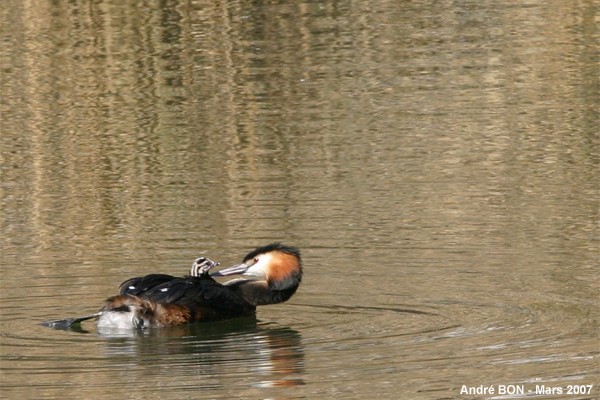
|
Some tenderness between parent and chick. |
| [To know more about the Great Crested Grebe] [Next picture] [Previous picture] [Top] |
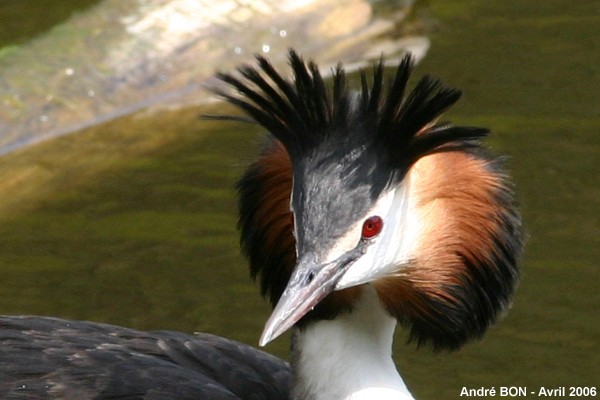
|
The brown neck decoration is only present during the mating period. The grebe's head will be less spectacular in winter. |
| [To know more about the Great Crested Grebe] [Next picture] [Previous picture] [Top] |
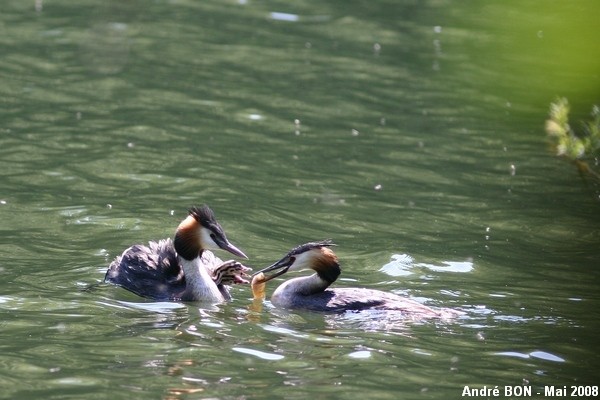
|
The young Grebes only stay on their parents' back during about ten days. The other parent brings food and both parents take their turn to carry the chicks. |
| [To know more about the Great Crested Grebe] [Next picture] [Previous picture] [Top] |
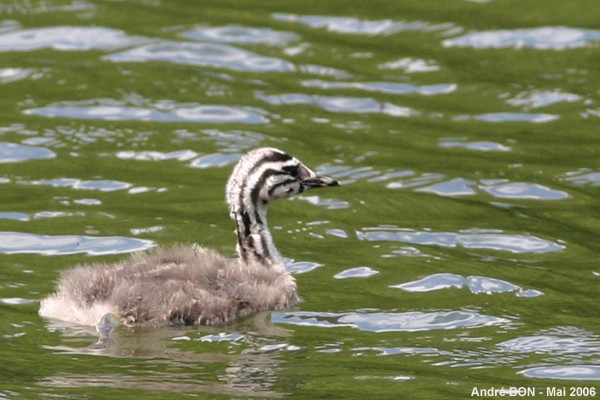
|
The young grebes show black and white stripes. This one is waiting for an adult to bring a fish. |
| [To know more about the Great Crested Grebe] [Next picture] [Previous picture] [Top] |
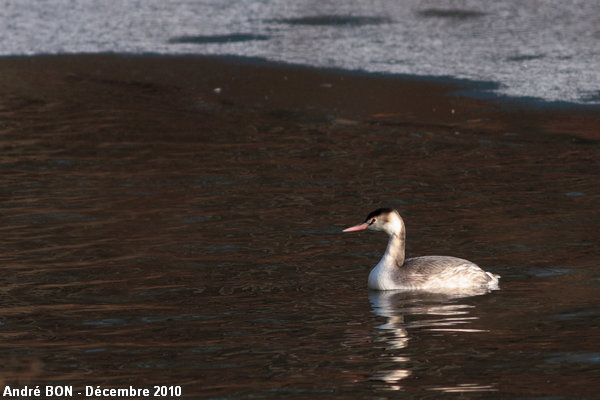
|
Great Crested Grebe in winter plumage in one corner of the pond not yet covered with ice. |
| [To know more about the Great Crested Grebe] [Previous picture] [Top] |
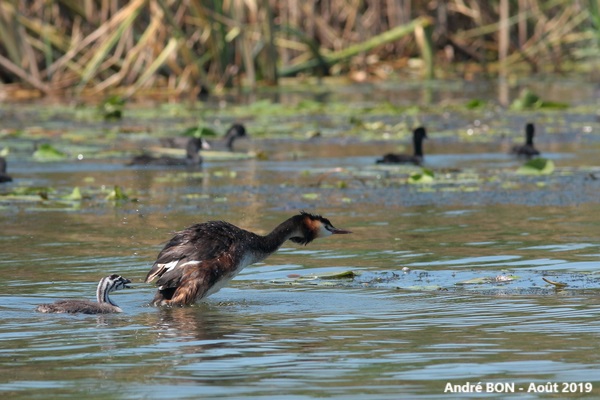
|
Fleeing from the tourist boat that comes to disturb the tranquillity of the place. |